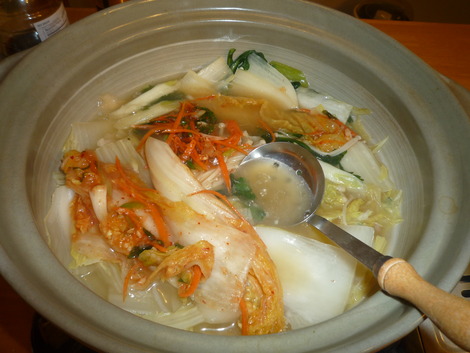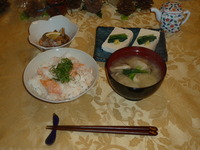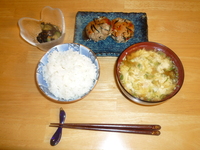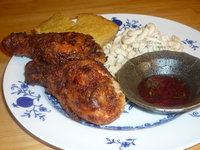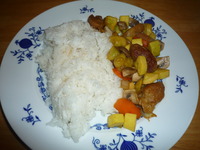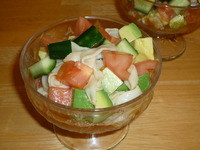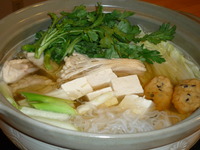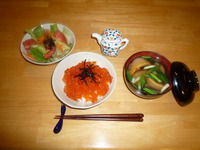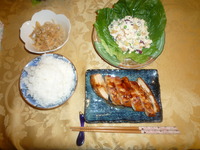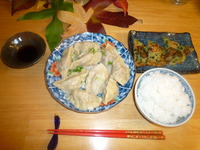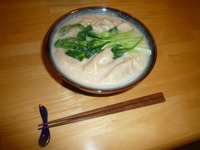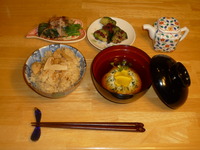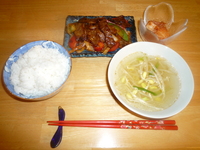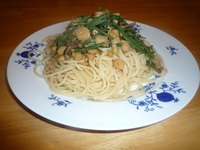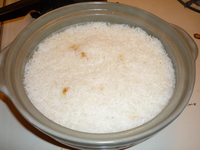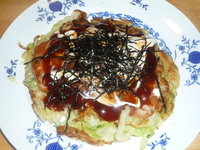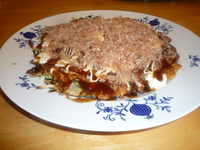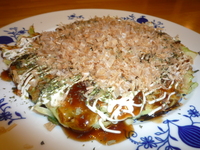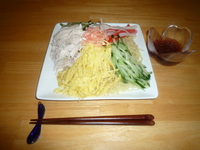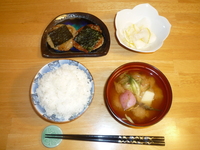Friday, February 4th, 2011
When I think of the quintessential winter time dish, it has to be nabe ryori. Nabe is Japanese hot pot and like most hot pot dishes, you can put anything in it. It's like the Asian version of stone soup. There are a few standard items that are usually part of most nabe dishes but there are many types of nabe such as fugu nabe, kimchi nabe or mizutaki (Fukuoka specialty). There are also different ways of eating nabe and it's even said that each household has their own way of eating nabe.
This recipe is my take on nabe and the way I grew up eating it. I used most of the standard nabe ingredients but as I mentioned earlier, anything goes so put in whatever ingredients you and your family likes. Traditionally, most nabe ingredients call for hakusai, negi, shiitake, shirataki, shungiku, enoki, tofu, fish balls (made from a fish paste) and thinly sliced or large cuts of fresh fish and cooked in a fish broth.
Make sure that you don't get called a Nabebugyo (鍋奉行) from your family/friends when eating nabe. The person who controls the nabe pot is called a Nabebugyo. It is often used to describe a person who is bossy because the person who controls the nabe pot dictates what goes in the pot and who eats what. Bugyo was a political position (equivalent to a govenor) during and before the Edo Period (1603 to 1868). Therefore, Nabebugyo is a person of authority who controls the nabe.
List of Common Ingredients
Not as common but ingredients I like to add
- suigyoza or leftover gyoza filling
- egg
- gobo
- daikon
- carrot
- thinly sliced beef or pork
Gomadare Ingredients (Servings 2)
2 tbsp. toasted sesame seeds
1 tbsp. miso
1 tbsp. sugar
2 tbsp. dashijiru
Directions for gomadare
- Grind up the sesame seeds finely in a suribachi (mortar and pestle)
- Add the miso, sugar and dashijiru (from the pot) and mix well. (I like the keep the sauce on the thick side and use the broth from the pot to thin out the sauce as I eat it.)
Soy Sauce Tare
The soy sauce tare is a 1:1 ratio of soy sauce and ponzu. I like a little acidity in my tare. I add a 1-2 teaspoons in my bowl as I pull items out of the nabe.
If you want to do a vegetarian or vegan nabe, just use kombu to make kombu dashi.
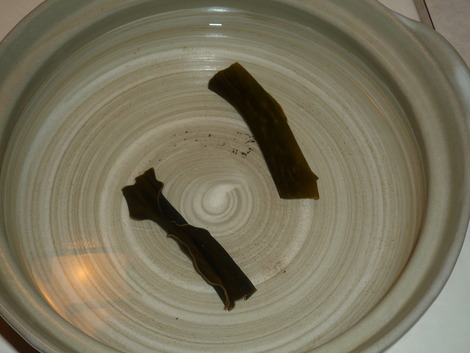
If you want a katsuobushi broth, gently simmer katsuobushi in the nabe pot and let it rest for a while. Add kombu before the katsuobushi to make a classic dashijiru.
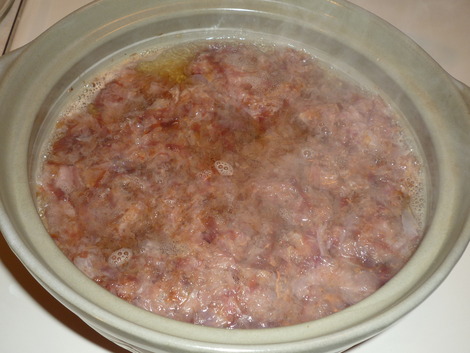
After straining the katsuobushi, return the dashijiru to the pot.
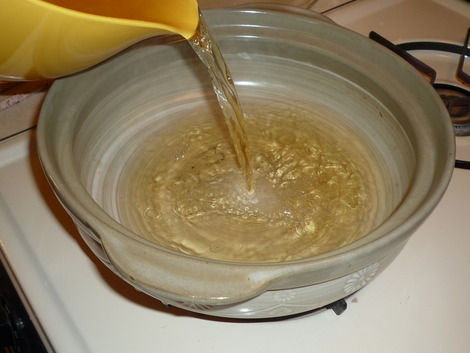
Grind the koma until finely ground and add miso, dashijiru and sugar to thin it out.
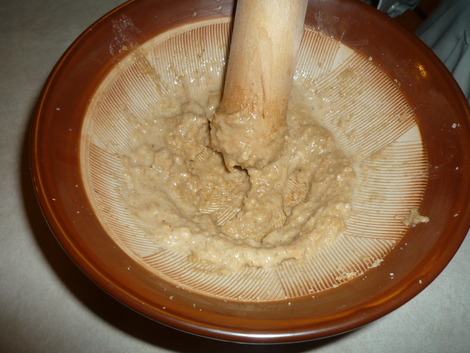
Put all your nabe ingredients (minus the meat) on the lid of the nabe pot.
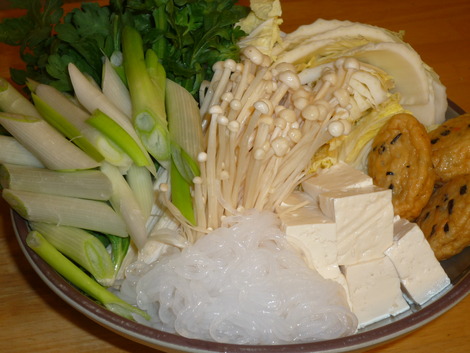
Set up your nabe station on the table with a portable gas stove. That way everyone can sit around the able and add their favorite nabe items into the pot. There are also electric nabe stoves as well.
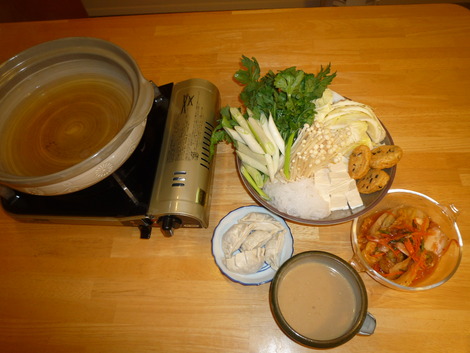
There are many different sauces and items you can put in your nabe. On day two of nabe, I used a different goma dare (sauce) and a soy sauce and ponzu tare.
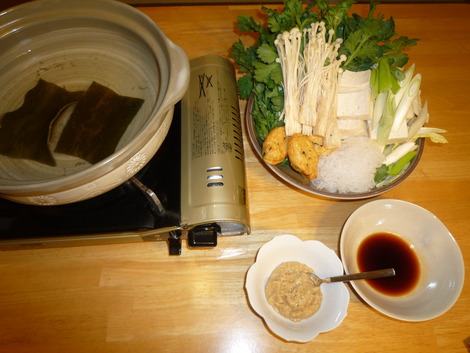
Add your favorite items to the pot. The hakusai take the longest here so I added it first so that it's at the bottom of the pot.
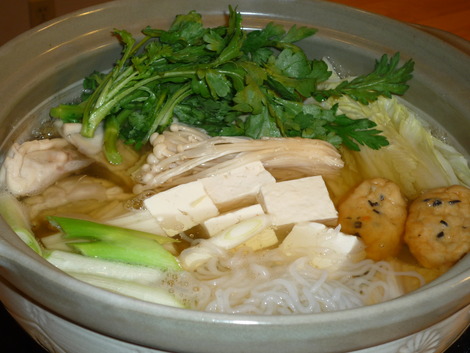
The tofu is done first. I used a slotted spoon to take out a few items so I can control how much broth I want.
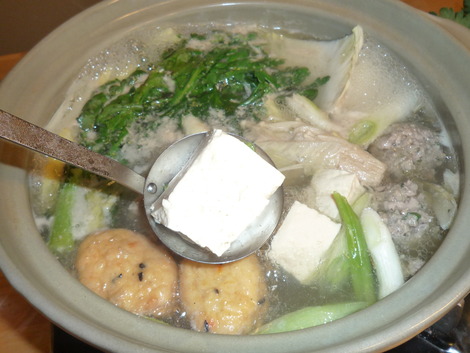
Add your favorite tare (sauce) on top and add some broth to thin it out and enjoy.
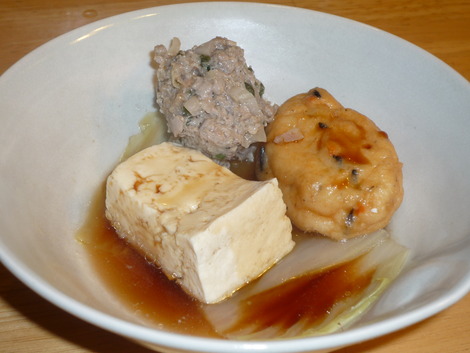
I think shirataki goes well with the goma dare.
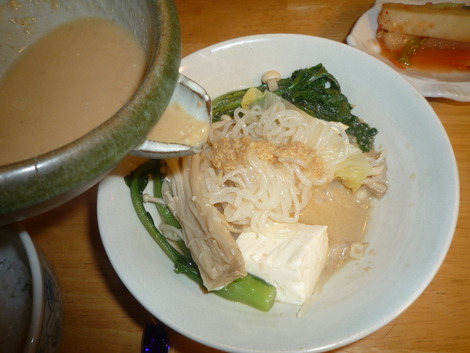
Halfway through, I wanted to change the flavor of the nabe and added kimchee. Many people add udon or rice in the end to finish their nabe.
